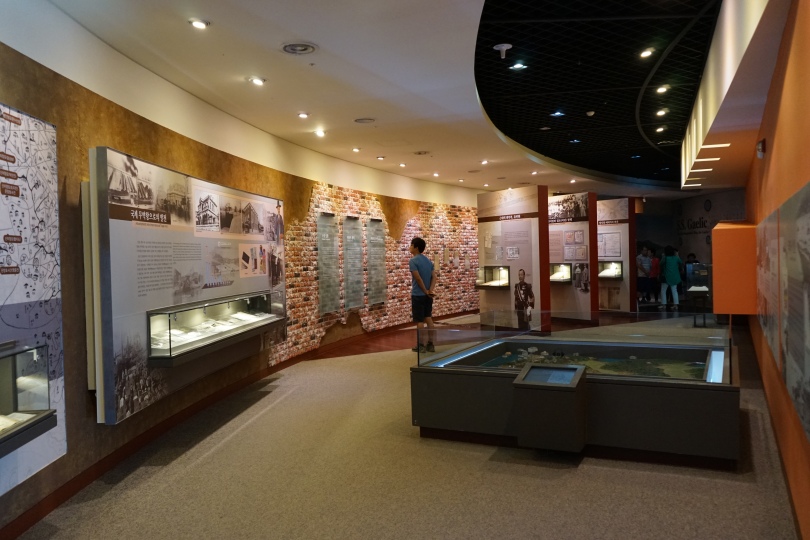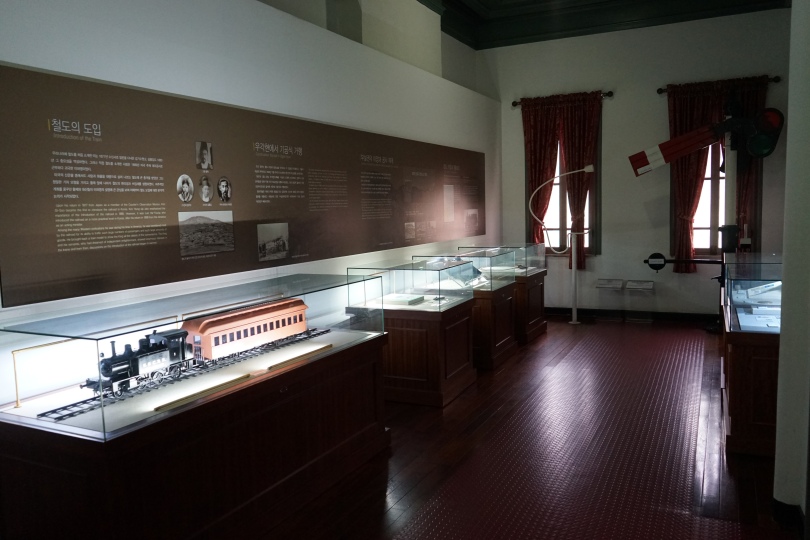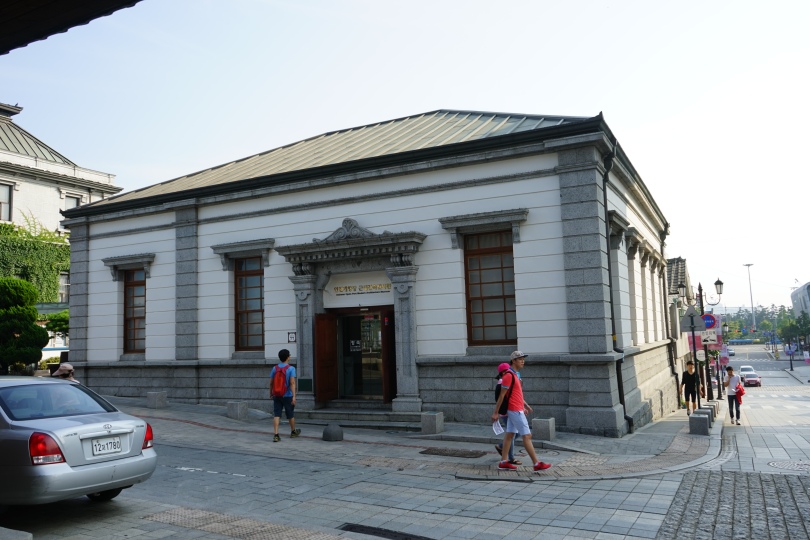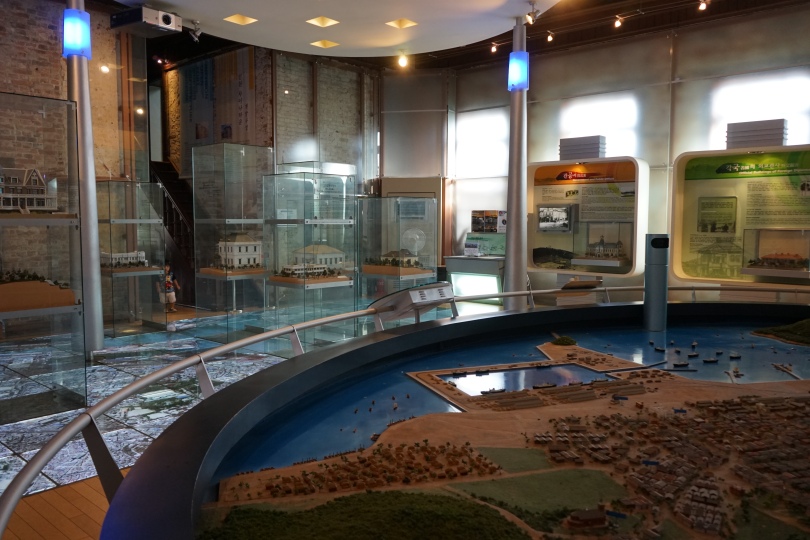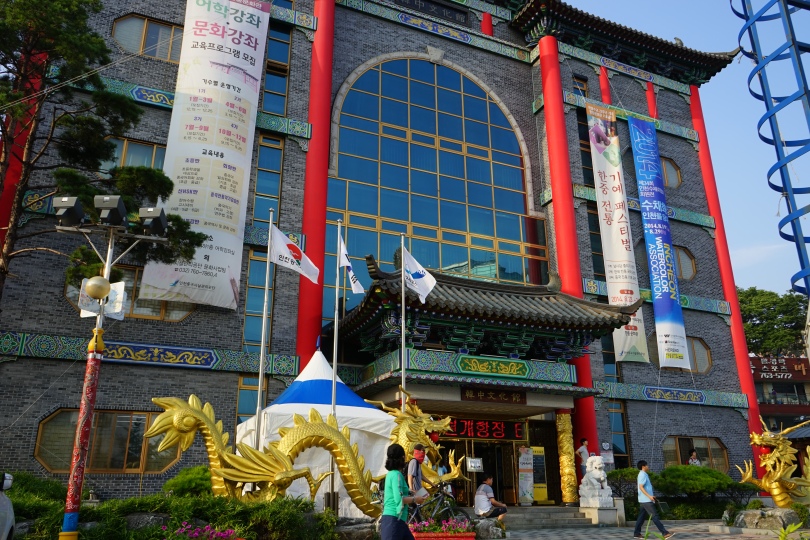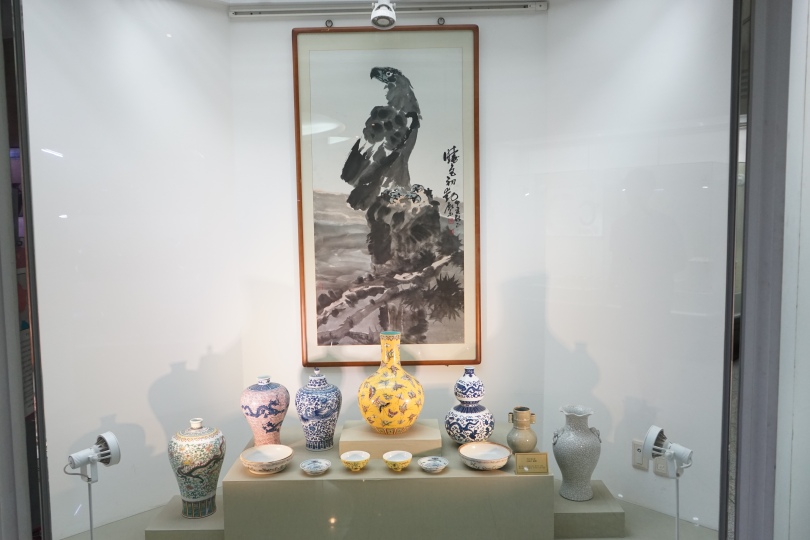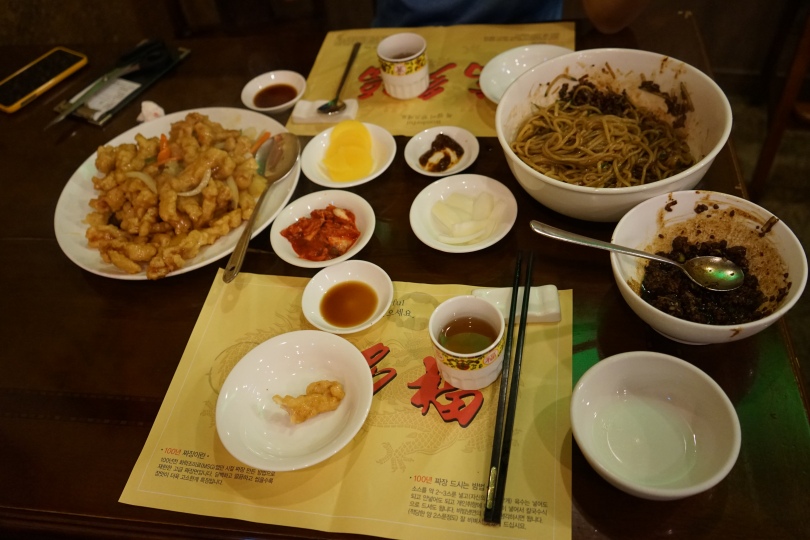Ganghwa Island/Country is the fifth largest island in Korea, or rather set of islands, because it’s made up of 11 inhabited islands and 17 uninhabited islands that collectively make up Ganghwa Island 강화도. It’s located off of the west coast of downtown Incheon City, but is now connected to the rest of the peninsula by Ganghwa Bridge, and while it’s still relatively remote and rural, this small island is worth a visit for its prehistoric relics. Ganghwa Island was one of the centers of the Goryeo Dynasty 고려시대 which was the first Korean Kingdom. Also, because it’s located along the coast, this area was the site of many battles during the Joseon Dynasty (1392-1910) against Japan, France, and the US.
ONE DAY TRAVEL ITINERARY:
1. Ganghwa History Museum (강화역사박물관)
2. Ganghwa Dolmen (강화 고인돌)
3. Goryeo Palace (고려궁지)
4. Lunch (간장계장)
5. Chojijin Fortress (초지진)
6. Deokjinjin Fortress (덕진진)
7. Bunori Dondae Fortress (분오리돈대)
8. Ice Fishing

<Img Source: Wikipedia>
I drove out to Ganghwado Island last Saturday and my first stop was the Ganghwa History Museum 강화역사박물관 which gave a quick overview of the island’s history. The museum is pretty large, although most of it is not open to the public because it is also used for research. The museum exhibitions go all the way back to the beginning of Korea and through the Bronze Age, Goryeo Dynasty, and Joseon Dynasty. I learned how and why dolmen were made and there was also a lot of information about the various battles with the West during the Joseon Dynasty.





Ganghwa History Museum Admission Fee: 1,500 won / adult
Parking Fee: free
Operating Hours: 9 am – 6 pm / Closed Mondays & New Year’s Day, Chuseok Day
Average Viewing Time: one hour
Language: Korean, English, (Some Chinese and Japanese) description panels were available
Contact Information: museum.ganghwa.go.kr 032) 934-7887
The Ganghwa History Museum is located inside the World Cultural Heritage Ganghwa Dolmen Park, so after checking out that museum, I only had to cross the street to see the Ganghwa Dolmen 강화 고인돌 which is a UNESCO World Heritage relic. Dolmens are ancient stone burial markers, and there are around 80 officially recognized dolmen on Ganghwa Island. The Ganghwa Dolmen is the most famous one here and it is estimated to weigh between 150-225 tons, and local archaeologists believe it took 200-300 people to lift the top piece into place. These dolmens are important because it means that there was some type of tribe or someone with enough power to gather all these people together to lift such a heavy rock. Along the circumference of the park, there were some models of other famous rock structures around the world like Stonehenge, but it was so cold that I didn’t take much time to look around.



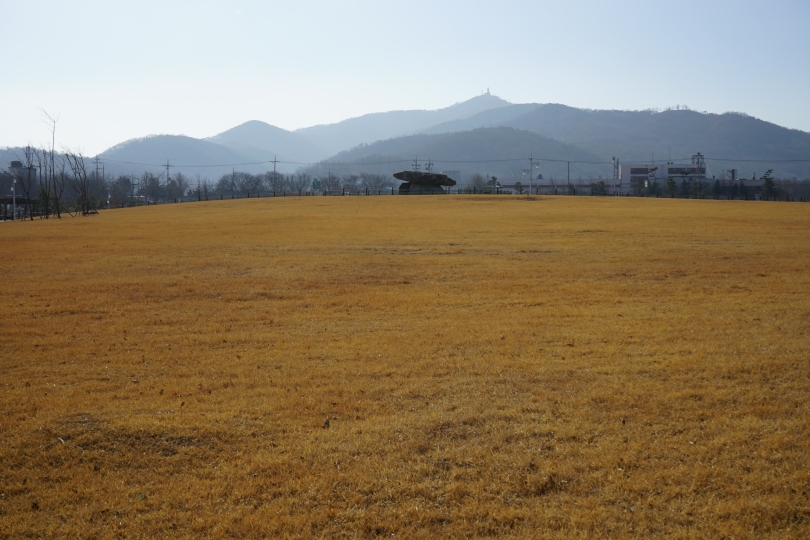
Ganghwa Dolmen Admission Fee: free
Parking Fee: free
Operating Hours: N/A
Average Viewing Time: 10 minutes
Language: N/A
The Goryeo Royal Palace Site 고려궁지 is located nearby and this place was the site of the royal palace of the Goryeo Dynasty and was later converted into a library during the Joseon Dynasty. The Goryeo Palace was moved here in 1232 and stayed here for 39 years during King Gojong’s reign because the coastal location gave it better protection against Mongolians invasions. After King Gojong made a truce with the Mongols, he moved the capital back to Gaeseong in 1270.




Goryeo Royal Palace Site: 900 won / adult
Parking Fee: free
Operating Hours: N/A
Average Viewing Time: 10 minutes
Language: Korean and some English
Driving around the island, I saw a lot of restaurants that specialized in blue crabs marinated in soy sauce 간장계장 which is one of my favorite foods, so for lunch I had a seafood set that included blue crabs and raw shrimp.

After lunch I checked out a few fortresses. The Chojijin Fortress 초지진 was built in 1656 to defend from marine attacks from Japan. This fortress was restored in 1973, but there are still some original parts of of the wall remaining. I saw some cannon and bullet marks on the fortress walls and on some nearby trees.



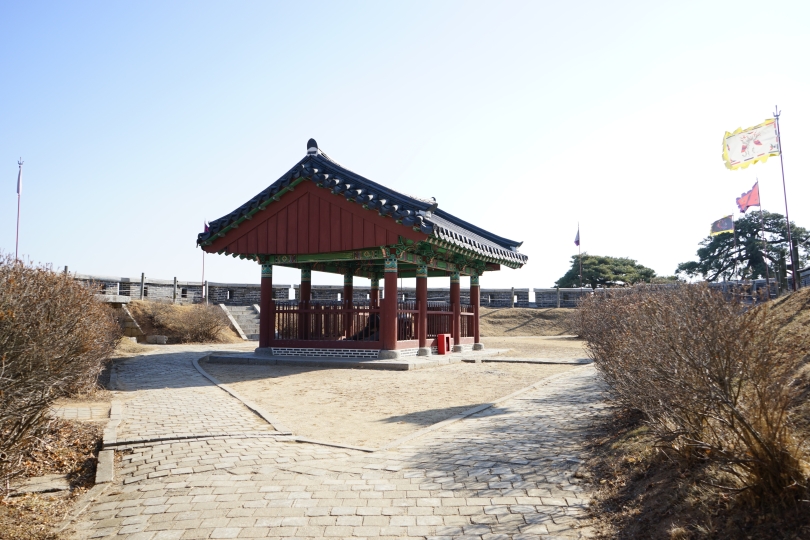

Chojijin Fortress Admission Fee: 700 won / adult
Parking Fee: free
Operating Hours: 9 am – 5 pm Nov-Feb / 9 am – 6 pm Mar-Apr, Sept-Oct / 9 am – 7 pm May-Aug
Average Viewing Time: 15 minutes
Language: Korean and English description panels were available
Then I drove to the nearby the Deokjinjin Fortress 덕진진 which was built in 1679 to defend the Ganghwa straits. It was the location of a major battle in 1866 during the 병인야요 French Invasions. There are reproductions of cannons here on display, which made for a good photo op.





Deokjinjin Fortress Admission Fee: 700 won / adult
Parking Fee: free
Operating Hours: 9 am – 6 pm summer, 9 am – 5 pm winter
Average Viewing Time: 30 minutes
Language: Korean and English description panels were available
There last fortress I checked out was Bunori Dondae 분오리돈대 which was located right by Dongmak Beach. It has four gun platforms and the watchmen here could see up to 3,100 meters away towards a fortress to the west called Songgot Dondae 송곶돈대. It was partially destroyed, but the original shape has been preserved.




Bunori Dondae Admission Fee: free
Operating Hours: N/A
Average Viewing Time: 15 minutes
Language: N/A
Contact Information: museum.ganghwa.go.kr 032) 934-7887
I noticed that there were a few places on the island where you could go ice fishing. I didn’t try it myself, but I did take a look around. At this particular place there were also sleds, inflatable balloons?, and bikes that you could rend to ride on the ice.

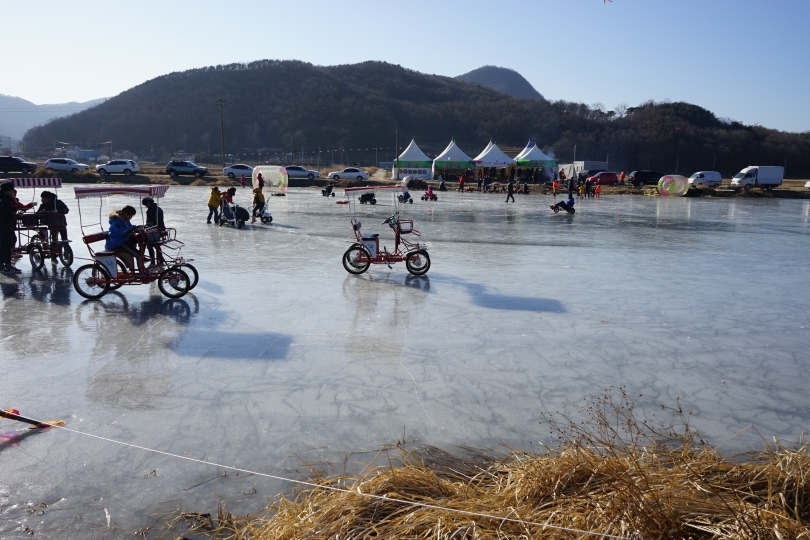


Before heading back to Seoul, there was a coffee shop that I wanted to check out. I found it on some food blogs and it was so popular that there were people waiting in lines to sit down.

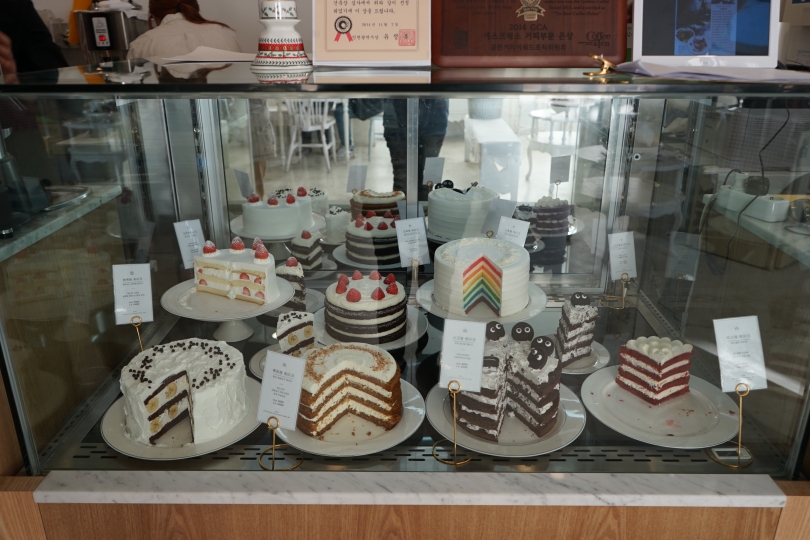
I’d like to come back here when the weather gets warmer. Hopefully I’ll get a chance to go camping here this year because there’s Maininsan which is a great place to go hiking, and lots of mudflats to catch crabs.



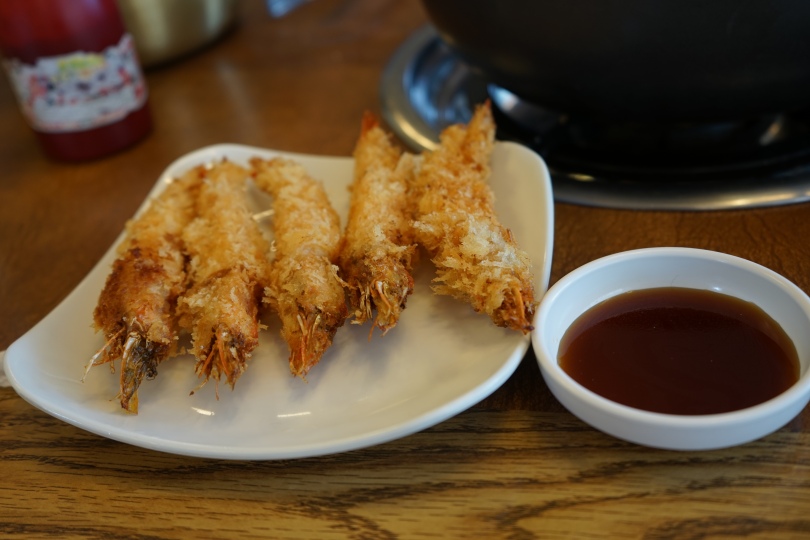
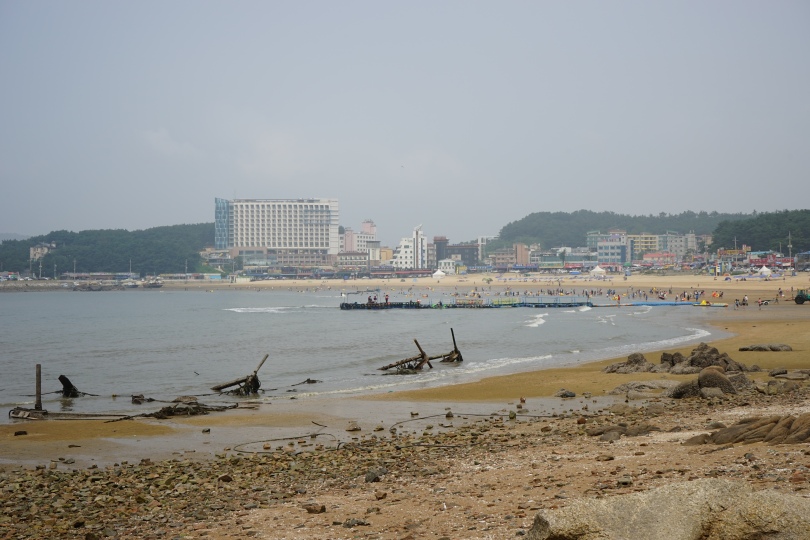
 There were some seagulls.
There were some seagulls.


